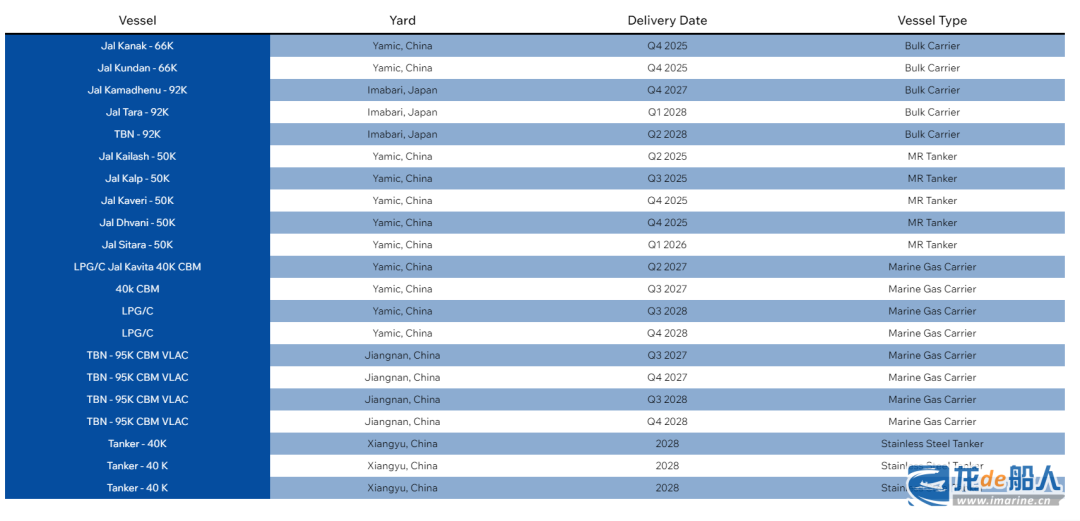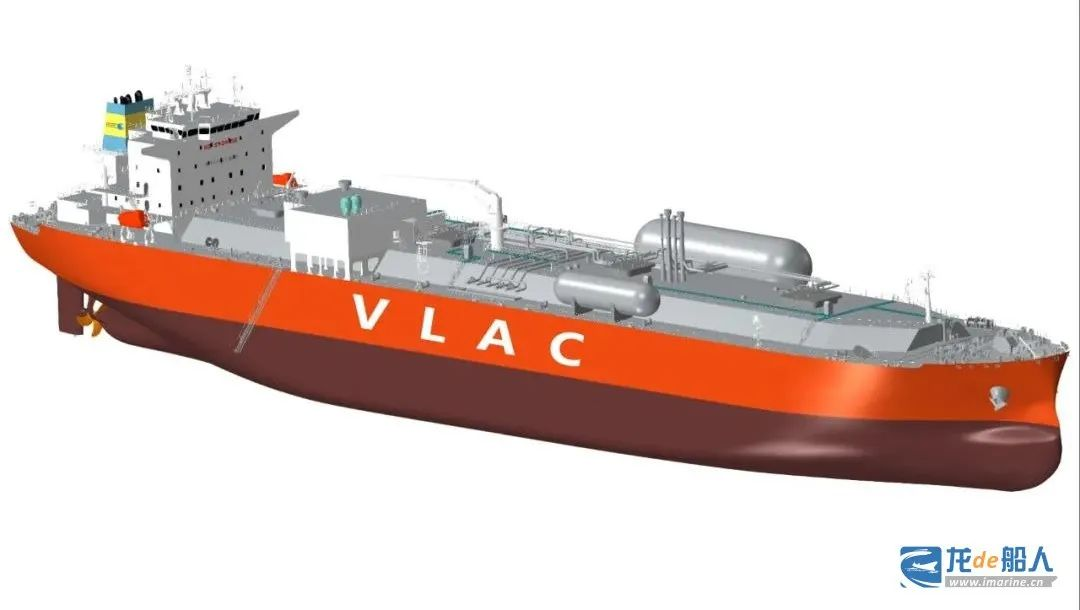To further advance its fleet expansion and renewal program, Singaporean owner Jaldhi Overseas is increasing its order for new vessels.

According to fleet data on Jaldhi Overseas’ official website, the company has ordered two very large liquid ammonia carriers (VLACs) from Jiangnan Shipyard, a subsidiary of China State Shipbuilding Corporation, three 40,000 dwt stainless steel chemical tankers from Nantong Xiangyu Shipbuilding & Offshore Engineering, and one 92,000 dwt bulk carrier from Imabari Shipbuilding of Japan.
Jaldhi Overseas has also ordered two 26,000 dwt stainless steel chemical tankers and one 20,000 dwt stainless steel chemical tanker from Asakawa Shipbuilding and Fukuoka Shipbuilding, respectively, according to TradeWinds. These three vessels have not yet been included in the company’s official fleet list, but the order news has been confirmed by the company’s CEO Suresh Kumar. These three new vessels will replace the company’s three currently operating stainless steel chemical tankers.
Fleet data shows that the two VLACs built by Jiangnan Shipyard are expected to be delivered in the third and fourth quarters of 2028 respectively. Jaldhi Overseas and Jiangnan Shipyard first cooperated on August 14, 2024, when the two parties signed a contract to build two 93,000 cubic meter VLACs and signed a letter of intent for the two VLACs, with a single vessel cost of approximately US$120 million. Based on last year’s cost, the four new vessels built by Jiangnan Shipyard are worth US$480 million (approximately RMB 3.5 billion).

It is understood that 93,000 cubic meters VLAC is a derivative of the fourth-generation VLGC boutique ship type (Panda 93A) independently developed by Jiangnan Shipyard. It is the world’s largest liquid ammonia carrier, not only the first choice for long-distance transportation of green ammonia, but also can be fully loaded with propane, butane and other liquefied petroleum gases.
The vessel is 230.0 meters in length, 36.6 meters in width and 22.5 meters in depth. It adopts a new generation of low-resistance line type developed completely independently, which enables it to have excellent and balanced performance under full load, ballast and liquid cargo loading conditions of different gravities. The engine room is equipped with mature LPG dual-fuel main engine and shaft generator to meet the current carbon emission requirements.
The three 40,000 dwt stainless steel chemical tankers contracted by Nantong Xiangyu Shipbuilding & Offshore Engineering are expected to be delivered in 2028. It is worth noting that these three new vessels were originally ordered by Japan’s Doun Kisen, two of which were resold to Jaldhi and the other was leased to Jaldhi for a long term. Doun Kisen is an old customer of Nantong Xiangyu Shipbuilding & Offshore Engineering and has ordered a series of 40,500 dwt, 63,500 dwt and 82,000 dwt bulk carriers from the shipyard since 2018. In December last year, the two parties also signed a contract to build two types of four bulk carriers.
One bulk carrier undertaken by Imabari Shipbuilding of Japan is expected to be delivered in the second quarter of 2028; two 26,000 dwt stainless steel chemical tankers of Asakawa Shipbuilding and one 20,000 dwt stainless steel chemical tanker of Fukuoka Shipbuilding will all be delivered in 2027. Shipbrokers assessed the cost of the 26,000 dwt stainless steel chemical tankers to be over US$48 million and the 20,000 dwt stainless steel chemical tankers to be approximately US$40 million.
It is understood that Jaldhi Overseas is a Singapore shipping company established in 2004, specializing in chartering business, operating about 400 vessels per year, and its fleet not only serves Bothra Group, but also used for its own cargo trade.
According to the fleet data on its official website, together with the orders from Fukuoka Shipbuilding and Asakawa Shipbuilding, Jaldhi Overseas holds 24 newbuildings, including 5 bulk carriers, 6 stainless steel chemical tankers, 5 MR product tankers, and 8 gas carriers, of which 18 are constructed by Chinese shipbuilders, and the other 6 are all undertaken by Japanese shipbuilders.


